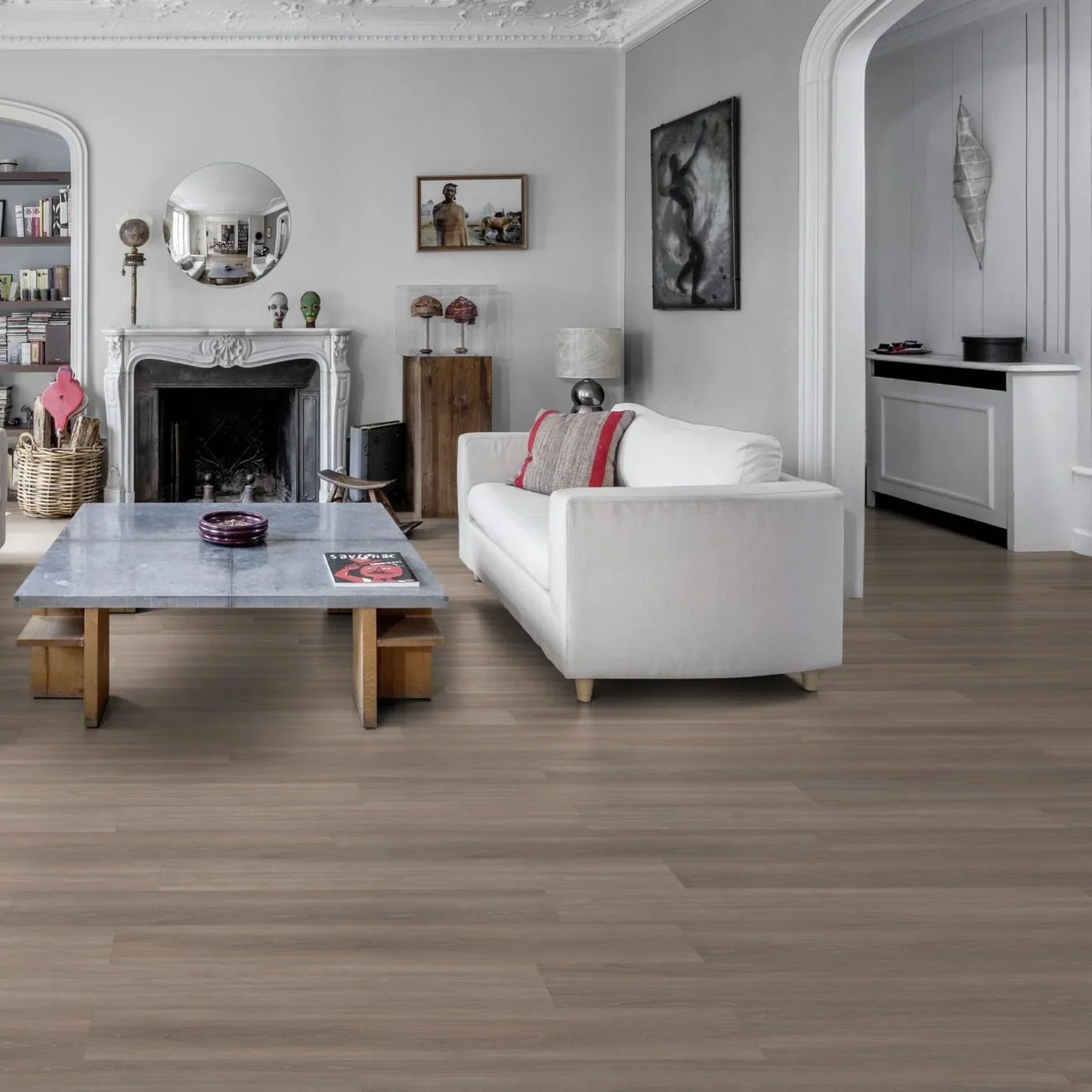
Author, Written by: P. Hirani (Wood flooring Expert)
Have you ever noticed how some rooms feel peaceful and cozy, while others echo with every step and conversation? That’s acoustic comfort at work—and your flooring plays a major role in how sound travels throughout your home. Whether you're creating a quiet retreat or a lively family space, the right flooring can significantly reduce noise and make your home feel more comfortable overall.
Let’s explore how different flooring types affect acoustics and what to consider when choosing sound-friendly floors for your space.
1. What Is Acoustic Comfort, Anyway? 🔇
Acoustic comfort refers to how pleasant or tolerable the sound levels in a space are. It includes things like:
-
Impact noise (footsteps, dropped objects)
-
Airborne noise (voices, music, TV)
-
Echo and reverberation (sound bouncing off hard surfaces)
If your flooring doesn’t absorb or dampen these sounds, your home can quickly become noisy and stressful—especially in open-plan layouts or multi-level buildings.
2. Flooring Materials: How They Stack Up for Sound 🎧
✔ Carpet – Best for Sound Absorption
Carpet is the gold standard when it comes to softening sound. It absorbs both airborne and impact noise extremely well.
✔ Ideal for bedrooms, kids’ rooms, and upstairs areas
✔ Reduces echo and makes a room feel quieter instantly
✔ Available with sound-absorbing underlays for extra insulation
🟡 Downside: Not ideal for areas prone to spills or moisture.
✔ Cork – Naturally Quiet and Comfortable
Cork flooring offers excellent sound absorption and insulation while also being soft underfoot.
✔ Absorbs both sound and vibration
✔ Works well in offices, media rooms, or apartments
✔ Eco-friendly and renewable
🟡 Style tip: Go for cork in neutral tones to blend with minimalist or Scandinavian decor.
✔ Luxury Vinyl Plank (LVP) – Quiet, With the Right Underlay
LVP is often chosen for its durability and water resistance—but when installed with an acoustic underlay, it also performs well acoustically.
✔ Minimises impact noise
✔ Easy to maintain and good for high-traffic areas
✔ Some products come with built-in sound-reducing layers
🟡 Best for: Open-plan living areas, kitchens, or basements.
✔ Engineered Wood – Stylish, But Needs Support
Wood floors are timeless, but they’re not naturally soundproof. Pair them with a quality underlayment to reduce noise.
✔ Looks luxurious and warms up the space visually
✔ Add rugs in high-traffic zones to soften footsteps
✔ Underfloor acoustic barriers can reduce sound transfer between floors
🟡 Tip: Avoid installing wood directly on concrete without a sound barrier if acoustic comfort is a priority.
✔ Tile and Concrete – Echo-Prone but Controllable
Hard surfaces like tile and polished concrete reflect sound, often leading to a more echoey or “live” space.
✔ Durable and easy to clean
✔ Best in bathrooms, kitchens, or entryways
✔ Use area rugs, curtains, and soft furnishings to balance out acoustics
🟡 Fix it: Soft textiles and wall treatments can dramatically improve comfort.
3. Don’t Forget the Underlay 🧱
The underlay (or sublayer) beneath your floor can make a world of difference when it comes to soundproofing.
✔ Foam and rubber underlays absorb impact and airborne noise
✔ Acoustic mats are ideal for multi-level homes or flats
✔ Underlays can be combined with almost any flooring type
🟡 Bonus: Many underlays also offer thermal insulation for added comfort.
4. Room-by-Room Considerations 🏠
-
Living rooms & open-plan areas: Use rugs and LVP with underlay for noise control
-
Bedrooms: Go for carpet or cork for softness and quiet
-
Kitchens & bathrooms: Stick with waterproof options and add soft mats to minimise echo
-
Staircases & hallways: Consider runners or acoustic treads to reduce clatter
The Sound of Comfort
Acoustic comfort is often overlooked, but it can make all the difference in how your home feels—especially if you live with kids, pets, or in a multi-storey building. Whether you’re renovating or building from scratch, choosing the right flooring and underlay combination can help create a space that’s not just beautiful, but calm and quiet, too.
👉 Need help finding a flooring option that works for both style and sound? Get in touch—we’re here to help make your home feel as peaceful as it looks.
About Author:
Peter H. is a flooring product expert who knows all about different types of flooring materials. He shares his knowledge in blogs to help readers make the best choices for their spaces.
